Samara State Technical University Introduction
Samara State Technical University is one of the oldest universities in the Volga region of Russia. It was established in 1910 and has a long and rich history. It is the largest scientific research and educational institution in the region and one of the key polytechnic universities in Russia.
Overview
Student size: The school has a total of 18,396 students, including 562 foreign students.
Faculty: It has 115 postdoctoral supervisors and professors, 617 doctors and associate professors.
History and establishment time
On July 3, 1914, Tsar Nicholas II approved the "Decree on the Establishment of a Polytechnic Institute in the City of Samara". In 1934, three previously independent technical colleges merged into the Middle Volga Industrial Institute, and the Department of Chemistry was added as the Department of Chemical Processes. In 1935, the Middle Volga Institute was renamed the Kuibyshev Industrial Institute. In 1962, the Kuibyshev Industrial Institute was reorganized into the Kuibyshev Polytechnic Institute. In 1980, the institute was awarded the Order of the Red Banner of Labor. In 1991, Kuibyshev Polytechnic Institute was renamed Samara Polytechnic Institute, and a year later it acquired the status of Samara State Technical University. In 2015, Samara State Technical University decided to merge with Samara State University of Architecture and Civil Engineering, and in 2016 it became one of Russia's 11 flagship universities.
School Strength
Teaching Achievements: As a long-established institution of higher learning in Russia, it has trained about 80,000 experts, many of whom have become outstanding scientists, designers, politicians and public figures.
Scientific Research Strength: The school has 33 research centers, including the International Research Center for Theoretical Materials Science, etc. It has undertaken a large number of scientific research projects and achieved important scientific research results in many fields, such as hydrogen energy technology, materials science, agricultural technology, etc., and actively cooperated with domestic and foreign scientific research institutions and enterprises to carry out scientific research projects and promote the transformation and application of scientific research results.
International Cooperation: The school has established cooperative relations with many foreign universities and scientific research institutions, carried out student exchange, joint scientific research and other projects, and continuously enhanced the school's international influence and competitiveness. In November 2020, Samara State Technical University became the "Science and Technology Hydrogen Valley" As part of the alliance, it conducts joint research and technological development on hydrogen production, transportation, safe storage and application in the energy field with five other leading educational and scientific research organizations in Russia.
Institutional nature
Public university.
Educational philosophy
Committed to the pursuit of pure scientific research and innovation, focusing on cultivating students' practical ability and innovative spirit, encouraging students to carry out their own projects and research, providing students with a good scientific research environment and conditions, enabling students to participate in scientific research projects during the learning process, improving students' scientific research ability and comprehensive quality, emphasizing the combination of theory and practice, and cultivating professional talents who can adapt to the needs of social development.
Key laboratories and disciplines
Key laboratories: The school has several key laboratories, such as the International Center for Theoretical Materials Science Research, etc. , providing an important platform for the research of materials science, physics and other disciplines. In addition, the school has also established joint laboratories with some enterprises to jointly carry out scientific research projects and promote the transformation and application of scientific research results.
Key disciplines: covering energy, oil and gas extraction, chemistry, petrochemicals, machinery manufacturing, transportation, food, national defense, information technology, instrument manufacturing, technical system automation and control, materials science, metallurgy, biotechnology, industrial ecology and other fields, among which automation and control, informatics and computing science, thermal energy, process composition, electronic engineering, electronic technology, applied mathematics and informatics, economic management, chemical technology and biotechnology, petroleum industry, environmental protection, metallurgy, materials science and materials technology and other majors are relatively strong.
Department
The school currently has 14 faculties, including Mechanical Engineering, Metallurgy and Transportation, Petroleum Engineering, Chemical Engineering, Electrical Engineering, Engineering and Technology, Thermal Engineering, Food Production Technology, Engineering Economics, Social and Human Sciences and Technology, Automation and Information Technology, Architecture and Civil Engineering, etc., covering multiple disciplines.
Ranking
ARES World University Academic Ranking - European Standard: 55th.
Ranking of university graduates in demand: 3rd among 132 Russian universities.
Annual ranking of Russian universities: 52nd among 100 Russian universities.
QS Emerging Europe and Central Asia Ranking: 301-350 in 2022.
Expenses
Tuition fees vary depending on the major, generally around US$2,000-4,000 per year, and accommodation and living expenses vary according to different accommodation conditions and personal consumption habits.
Campus
Teaching facilities: The university has 3 main campuses and 17 teaching buildings. The school's library has a rich collection of books, providing students with good learning and research resources. In addition, the school is also equipped with advanced laboratories, computer centers and other teaching facilities, providing strong support for students' learning and scientific research.
Living facilities: The campus has student dormitories, canteens, supermarkets and other living facilities, providing students with convenient living conditions. The school has convenient transportation and complete living facilities to meet students' daily needs.
Sports and cultural facilities: The school has many student clubs, such as the Literature Club, the Student Union, the Military Patriotic Club, etc., and also holds various activities such as literary evenings and sports competitions, creating a rich campus cultural atmosphere for students.
-

Peter the Great St.Petersburg Polytechnic University
-
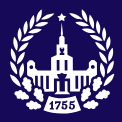
Moscow State University M. V. Lomonosov
-
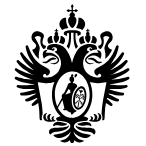
St. Petersburg State University
-
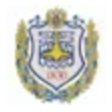
Bauman Moscow State Technical University
-
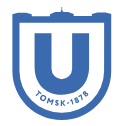
Tomsk State University
-
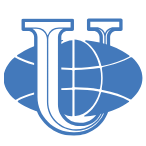
Peoples' Friendship University of Russia
-
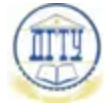
Don State Technical University
-

Moscow Institute of Physics and Technology
-
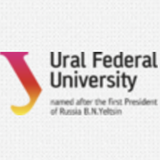
Ural Federal University
-

Kazan Federal University
-

Mesoamerican University
-

Istmo University
-

Mariano Galvez University of Guatemala
-

Regional University of Guatemala
-

Galileo University
-

Francisco Marroquín University
-

Rafael Landívar University
-

University of the Valley of Guatemala
-

University of San Carlos of Guatemala
-

Technological Institute of Tlaxcala Plateau
-

Golfo University
-

Technological University of South Sonora
-

Technological University of Huejotzingo
-

Tizimín Institute of Technology
-

Chilpancingo Institute of Technology

